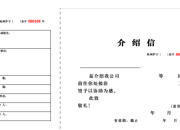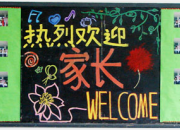英语说课稿
时间:2021-08-31英语说课稿
"说课"有利于提高教师理论素养和驾驭教材的能力。下面是公文站小编给大家整理收集的关于英语说课稿,希望对大家有帮助。
高中英语说课稿:《Unit 21 Body Language》说课稿模板
教材分析
(一)教材内容分析 本单元的中心话题是“肢体语言”,介绍了肢体语言在世界范围内的人们生活中所承担的不同角色及所起的重要作用,其中重点介绍了肢体语言在不同的文化背景下的不同含义及世界通用的肢体语言。本单元的绝大部分内容都围绕这一中心话题展开的。
“热身”(Warming up)部分以五幅不同的面部表情导出本单元的话题之一:面部表情是传递某人内心情感的一种方式,使他们能在平时注意自己在与他人交往中注意自身的面部表情。
“听力”(Listening)部分是以听的形式进一步向学生介绍了肢体语言的交际功能,然后以选择的形式考查学生对听力材料信息的筛选能力,同时又要求学生把所听到的信息应运于讨论之中。
“口语”(Speaking)部分向学生提供三个情景,让学生通过编对话进行“请求帮助”和“提供帮助”的日常英语练习。
“读前”(Pre-reading)部分编者设计了三个问题,诱发学生思考如何用肢体语言进行交流。激发学生进行阅读的欲望。
“阅读”(Reading)部分是一篇说明文,它介绍了We use both words and body language to express our thoughts and opinions and to communicate with other people./We can learn a lot about what a person is thinking by watching his or her body language。全文可分为三大部分,各部分的意思是:Part 1 (Para 1): We use both words and body language to express our thoughts and opinions and to communicate with other people. Part 2 (Para 2-3): Just like spoken language, body language varies from culture to culture. Part 3 (Para 4-5): Some gestures seem to be universal.
“读后”(Post-reading)部分设计了两种练习。第一类是三个问题,其中前两个测学生阅读的结果,第三个是一个开放性题目,鼓励学生把所学的与现实生活相结合。第二类是填写表格,对比肢体语言在美国和我国的异同。
“语言学习”(Language study)包括以下两部分:词汇部分设计了两块内容:
1)要求学生运用自己的六个身体部位进行交际,鼓励学生学着使用动词-ing形式;
2)设计了6个生词与英语解释的配对练习,旨在培养学生用英语解释生词的习惯及能力;语法项目是有关动词-ing形式作名词使用及其在句子中的功用,具体包括四个步骤:
1)学会区分动词-ing形式在句中的所担任的成分功能;
2)联词成句,旨在帮助学生理解动词-ing形式在句中充当主语;
3)词组翻译练习,旨在帮助学生理解动词-ing形式在句中充当定语及翻译;
4)按要求用动词-ing形式进行句子改写,旨在帮助学生理解动词-ing形式在句中充当宾语或表语。
“综合技能”(Integrating skills)设计了一个开放性的写作任务,要求学生运用6幅看起来毫不相干的图画进行写作,该任务有利于提高学生的创新思维能力。
“学习建议”(Tips)提供了一些写故事的建议,旨在帮助学生完成综合技能的写作练习。
“复习要点”(Checkpoint)部分简要总结了本单元的语法重点。同时通过两个问题引
导学生对本单元所学的词汇作一次小结。
(二)教学重点与难点
I. 动词-ing形式在句子充当主语、宾语、表语或定语
II. 交际功能句型: 如何提议和请求及其答语的句型
III. 重点、难点词汇词组
confused, avoid, go ahead, crazy, get through, tear down, occur
IV. 常用句型
Just like spoken language, body language varies from culture to culture.
There is nothing better than sth./doing sth./to do sth.
二、语篇分析:
Body Talk (P59-P. 60)
(一)课文图解
1. Read the text “Body Talk” and then complete notes about body language.
1) Generally, we can divide the whole text into three parts:
Part 1 (Para 1): We use both words and body language to express our thoughts and opinions and to communicate with other people.
Part 2 (Para 2-3): Just like spoken language, body language varies from culture to culture.
Part 3 (Para 4-5): Some gestures seem to be universal.
2) Fill in the table about gestures, countries and their meanings in these countries. (Words in italics can be blank.)
GESTURES COUNTRIES MEANINGS
eye contact some countries a way to show that one is interested
other countries rude or disrespectful
a circle with one’s thumb and index finger most countries OK
Japan money
France zero
Brazil rude
Germany
thumbs up the US great or good job
Nigeria rude
Germany the number one
Japan
moving the index finger in a circle in front of the ear some countries crazy
Brazil You have a phone call.
(二)课文复述
Retell the text using about 100 words.
Notes:
1. Try to use the –ing form to retell the text.
2. Make use of the notes and table above while retelling.
3. The possible version below can be used as material for both retelling and dictation.
One possible version:
We can communicate with other people by watching his body language besides words. Just like spoken language, body language varies from culture to culture. Take the gesture for OK as an example. The gesture means money in Japan and in France it means zero, while in Brazil and Germany doing so is rude. People in different countries show the same idea in different ways. For example, in many countries, shaking one’s head means “no”, and nodding means “yes”. However, in Bulgaria, parts of Greece, and Iran, the gestures have the opposite meaning. Although there are many different interpretations of our body language, some gestures seem to be universal. Perhaps the smile is the best example. A smile can help us well communicate with others.











